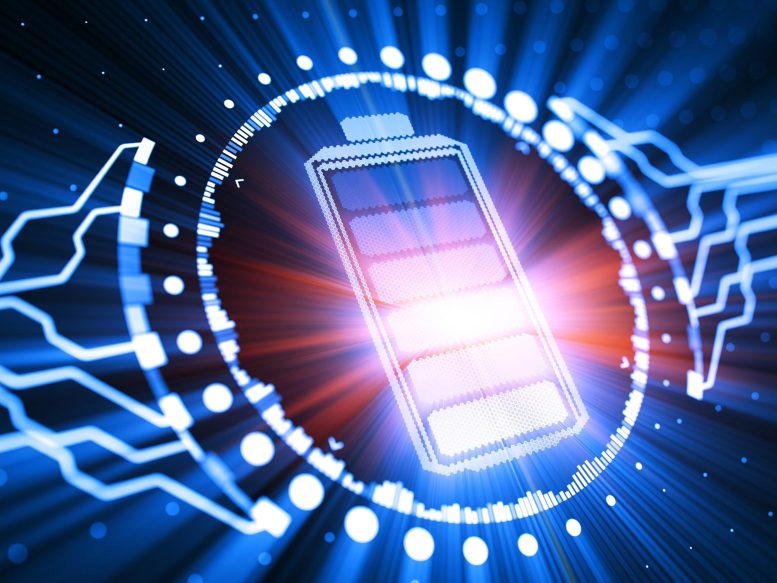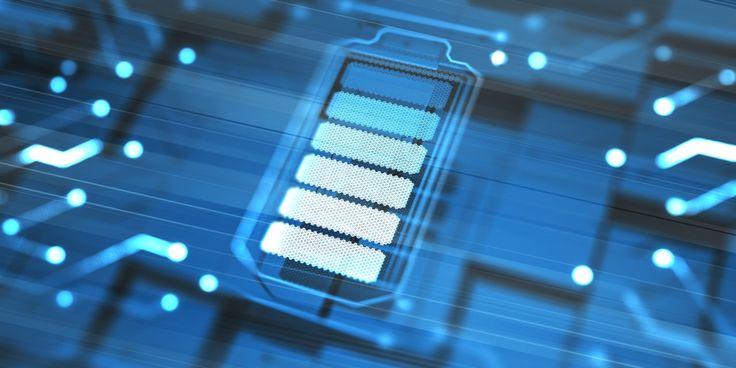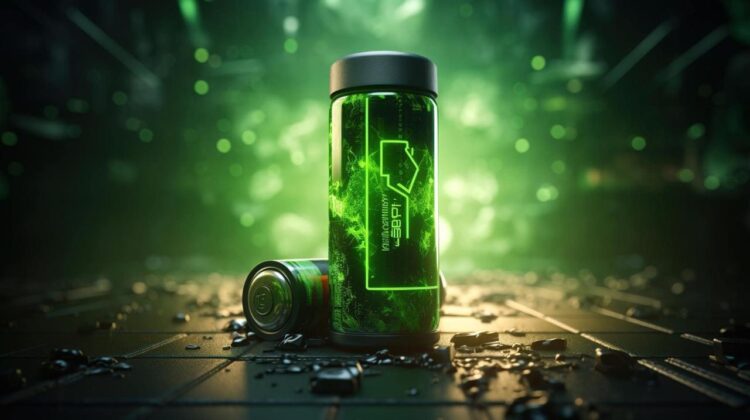The promise of a three-day battery life—a device that stays charged through 72 hours of continuous, intensive use—has long been the ultimate aspiration for consumers and the holy grail for engineers. Today, this goal is moving rapidly from ambitious concept to tangible reality, driven by a convergence of breakthroughs in material science, manufacturing processes, and smart energy management. This revolution in next-generation batteries is set to transform not only our smartphones and laptops but also the entire landscape of Electric Vehicles (EVs), renewable energy storage, and global power infrastructure. The key is moving beyond the 20th-century limitations of Lithium-ion technology and embracing revolutionary chemistries and architectures.
This comprehensive article delves into the core technologies making the three-day battery possible, examines the profound economic and environmental implications of this energy storage breakthrough, and analyzes the strategic challenges facing commercialization.
The Battery Technology Breakthroughs: Beyond Lithium-ion
Achieving a three-day duration requires a fundamental shift in energy storage density and charge/discharge efficiency. Researchers are focusing on four primary technological frontiers to replace or radically augment conventional Lithium-ion (Li-ion) batteries.
1. Solid-State Batteries (SSBs): The Performance Leap
Solid-State Batteries are widely considered the most promising successor to traditional Li-ion. They replace the volatile, flammable liquid electrolyte with a solid ceramic, glass, or polymer material.
- Higher Energy Density: The solid electrolyte allows the use of Lithium Metal anodes instead of graphite. Lithium metal is highly reactive but can pack significantly more ions, theoretically boosting energy density by 50% to 100% compared to standard Li-ion, enabling longer duration in the same physical size.
- Enhanced Safety: Eliminating the liquid electrolyte removes the primary cause of thermal runaway, making SSBs inherently non-flammable and vastly safer. This increased safety allows engineers to pack components closer together without fire risk.
- Faster Charging: The solid structure, if designed correctly, can facilitate ultra-fast lithium-ion transfer, potentially allowing an 80% charge in less than 15 minutes, a crucial factor for EV adoption.
- Longer Lifespan: The stable solid electrolyte minimizes the formation of dendrites (lithium metal whiskers) and reduces degradation cycles, significantly extending the battery’s operational lifespan.
2. Silicon Anodes: Augmenting Li-ion Power
While full Solid-State solutions are complex to manufacture, using Silicon to replace or blend with graphite in the Li-ion anode offers an immediate, significant performance boost.
- Theoretical Capacity: Silicon can absorb and store nearly ten times more lithium ions than graphite. This means a smaller, lighter anode can hold much more charge.
- The Swelling Challenge: The main obstacle is that silicon violently swells (up to 400%) when charged, causing the anode structure to break down rapidly.
- Nanostructure Solutions: Startups are overcoming this by using silicon nanowires, porous silicon microparticles, or graphene-silicon composites to accommodate the expansion while maintaining structural integrity, offering a path to commercialization in the short term.
3. Sodium-Ion Batteries (NIBs): The Sustainable Alternative
Sodium-Ion batteries use sodium instead of lithium. While slightly less energy-dense than lithium, they offer major strategic and economic advantages crucial for large-scale energy storage.
- Abundant Material: Sodium is the sixth most abundant element on Earth (found in common salt), making it inexpensive, globally sourced, and eliminating reliance on geopolitically sensitive lithium and cobalt supply chains.
- Improved Safety: Like SSBs, they are often safer and more stable than traditional Li-ion, capable of operating effectively in a wider temperature range.
- Ideal for Grid Storage: Their lower cost and high cycle stability make them excellent candidates for large-scale renewable energy grid storage, ensuring the power generated by solar and wind is reliable 24/7.
4. Next-Generation Chemistries (Lithium-Sulfur & Lithium-Air)
These chemistries hold the theoretical potential for energy densities far exceeding any current technology, but face significant scientific hurdles.
- Lithium-Sulfur (Li-S): Offers a theoretical density 2 to 5 times that of Li-ion, but suffers from rapid capacity fade due to sulfur migration (polysulfide shuttle).
- Lithium-Air (Li-O2): Holds the highest theoretical energy density, comparable to gasoline, but is currently hampered by stability, lifespan, and efficiency challenges.
 Economic and Market Transformation
Economic and Market Transformation
A breakthrough to a three-day, high-density battery has ripple effects across virtually every industry, generating massive economic value and driving new market segments.
A. Revolutionizing Electric Vehicles (EVs)
The 72-hour battery life translates directly into the elimination of two major consumer anxieties: range anxiety and charging time anxiety.
- 500+ Mile Range: High-density SSBs or advanced Silicon-Anode Li-ion batteries could easily push the standard EV range past 500 or even 600 miles (800-1000 km) on a single charge, comparable to gasoline cars.
- Infrastructure Decoupling: Longer range reduces the immediate reliance on ubiquitous, fast-charging infrastructure, allowing for rapid EV adoption in areas where charging stations are currently sparse.
- Lighter Vehicles: Higher energy density means fewer battery cells are required to achieve a target range, reducing the overall weight of the battery pack and improving the vehicle’s efficiency and handling.
B. The Mobile and Wearable Computing Leap
For consumer electronics, the breakthrough shifts the focus from anxiety management to feature-rich innovation.
- Continuous Use Devices: A three-day smartphone or laptop allows users to rely on the device for extended travel, fieldwork, or emergency situations without seeking an outlet.
- Advanced Feature Integration: The power surplus allows manufacturers to integrate more power-hungry features (e.g., permanent 5G connectivity, advanced AI processing, high-fidelity Extended Reality (XR) displays) without compromising user experience.
- Wearable Independence: Smartwatches and medical wearables could run for weeks or months, allowing for truly continuous health monitoring and reducing the cognitive load of daily charging.
C. Decarbonizing the Energy Grid (Grid Storage)
Low-cost, safe, and stable batteries (like Sodium-Ion or flow batteries) are essential for achieving net-zero carbon goals.
- Renewable Integration: Solving the intermittency problem of solar and wind power. Batteries store excess energy generated during peak production times (mid-day sun, windy nights) and discharge it reliably when demand is high and generation is low.
- Peak Shaving: Utility companies can use large battery banks to store power during low-cost, off-peak hours and sell it back to the grid during high-demand, high-cost peak hours, stabilizing prices and increasing efficiency.
- Energy Sovereignty: Countries can reduce reliance on fossil fuels and increase their energy independence by maximizing the utilization of domestic renewable resources.
Commercialization Hurdles and Strategic Challenges
Despite the scientific promise, the mass production and deployment of next-generation batteries face significant technical and industrial barriers that require massive investment and coordinated efforts.
A. Manufacturing and Scalability
Scaling new battery chemistry from a successful lab prototype to mass-market production is notoriously difficult and expensive.
- Gigafactory Readiness: Existing Gigafactories are optimized for traditional Li-ion cell production. Re-tooling or building new facilities for SSBs or Sodium-Ion requires massive capital investment (billions of dollars) and entirely new process engineering.
- Supply Chain Instability: Establishing a global, robust, and ethical supply chain for new, often specialized materials (e.g., specific solid electrolytes or high-purity silicon) is a massive undertaking subject to geopolitical risks.
- Quality Control: Maintaining consistent quality and uniform performance across millions of new battery cells is a major bottleneck, as tiny flaws in a solid electrolyte can lead to immediate failure.
B. Cost Parity and Investment Risk
New technologies must eventually compete on cost with the highly optimized, decades-old Li-ion supply chain.
- Initial High Cost: The cost of producing the first SSBs is significantly higher than Li-ion due to low-volume production and proprietary manufacturing techniques. VCs and industry leaders must sustain long-term investment until economies of scale are reached.
- Capital Intensity: Unlike software startups, battery startups require enormous initial capital expenditure for R&D, specialized equipment, and pilot lines, leading to greater financial risk.
- Competing Technologies: Investors must navigate the risk of placing large bets on one specific technology (e.g., SSBs) only to have a competitor’s rival chemistry (e.g., Li-Sulfur) achieve a breakthrough that leapfrogs their investment.
C. Recycling and Sustainability
A true energy revolution requires closing the loop and addressing the end-of-life challenge for these complex new materials.
- New Recycling Processes: Existing recycling methods are optimized for Li-ion cobalt, nickel, and lithium. New chemistries (silicon, sulfur, sodium) require entirely new, economically viable recycling processes to recover high-value materials.
- Environmental Impact Assessment: Thoroughly assessing the full life-cycle environmental impact of mining and processing new materials, ensuring that the “three-day battery” does not create a new, unsustainable waste stream.
 The Strategic Future: Managing Energy at the Edge
The Strategic Future: Managing Energy at the Edge
Beyond the battery cell itself, the transition to three-day power mandates a holistic approach to energy management, relying heavily on Artificial Intelligence (AI) and edge computing.
1. AI-Driven Battery Management Systems (BMS)
The BMS is the “brain” that controls the battery pack, and its role is becoming increasingly crucial and intelligent.
- Predictive Degradation: AI algorithms analyze real-time charging, temperature, and usage data to predict when a specific cell or module is likely to fail, allowing for proactive maintenance and maximizing the life of the entire pack.
- Optimal Charging Protocols: The BMS uses ML to dynamically adjust charging speed and voltage based on the battery’s current state and temperature, minimizing stress on the anode and cathode to extend cycle life while optimizing charge time.
- Personalized Power Allocation: For consumer electronics, the AI learns user usage patterns (e.g., knows the user is asleep or not using the GPU) and dynamically throttles background processes and allocates power, maximizing perceived battery life.
2. Charging Standardization and Integration
The industry needs universal standards for seamless adoption.
- Universal Plug Standards: Continued international push for standardized charging plugs (like the push for USB-C in the EU or NACS for EVs) to ensure interoperability across all brands and regions.
- Vehicle-to-Grid (V2G) Integration: Enabling EVs to not just draw power from the grid but also safely discharge excess stored energy back into the grid during high-demand periods, transforming EV fleets into decentralized, mobile power storage units.
3. Modular and Swappable Architectures
To simplify maintenance and reduce downtime, particularly in commercial fleet applications, modular battery design is gaining traction.
- Simplified Replacement: Designing battery packs in easily swappable modules allows a failed section to be replaced quickly without needing to replace the entire pack, improving repairability and sustainability.
- Battery-as-a-Service (BaaS): Commercial models where consumers or fleet operators buy the vehicle but lease the battery, allowing them to swap out a depleted battery for a fully charged one in minutes, eliminating wait times and managing the battery’s end-of-life responsibility centrally.
The three-day battery is much more than a convenience upgrade; it is the fundamental technological key to unlocking the decarbonized, digitized future. The convergence of solid-state innovation, silicon integration, and AI management systems is transforming energy storage from a limitation into an unparalleled source of economic potential and environmental resilience.












